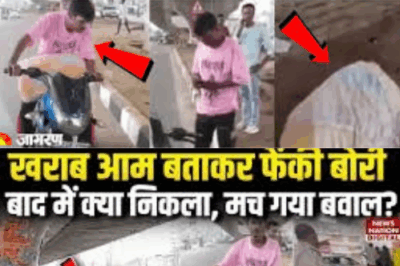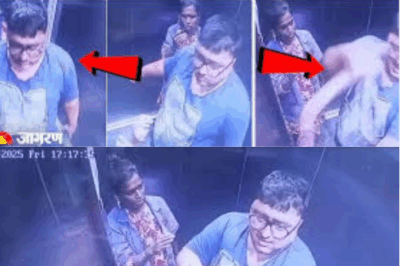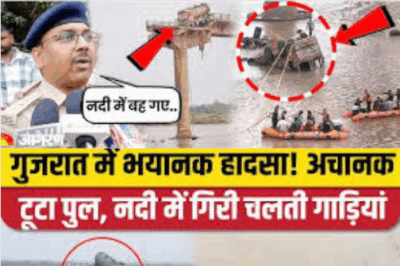Gujarat Bridge Collapse Update: Horrific pictures of the bridge accident in Vadodara, eyewitness told the whole story
On July 9, 2025, the tranquil morning in Gujarat was shattered by a tragedy that unfolded on the Gambhira Bridge, connecting the districts of Vadodara and Anand. This bridge, stretching nearly 900 meters and constructed over four decades ago, had long been a vital artery for thousands of commuters and a lifeline for trade and daily life in the region. Yet, in a matter of moments, it became the epicenter of horror, loss, and a harsh reckoning with the consequences of infrastructural neglect.
Eyewitnesses and survivors recount the events with trembling voices and haunted eyes. Vehicles were crossing the bridge as usual, unaware of the impending disaster. Suddenly, with no warning, a large slab—about 10 to 15 meters—gave way, sending vehicles plummeting into the swollen waters of the Mahisagar River below. The bridge, already in a dilapidated state as locals had long warned, split into two, leaving a scene of utter devastation. Trucks, cars, and an auto-rickshaw were caught in the collapse. Some vehicles hung precariously, half-submerged, while others disappeared entirely beneath the river’s surface. The cries of those trapped, the chaos of rescue attempts, and the sight of bodies floating in the water painted a grim tableau that would be etched in the memory of the community for years to come.
The immediate aftermath was a harrowing scramble for survival and rescue. Survivors described how they were trapped inside their vehicles, some with trucks crushing their cars from above, others surrounded by the rising river. One man, after escaping the wreckage, ran nearly seven kilometers to summon help, desperate to save those still trapped. When rescue teams and villagers arrived, they found people clinging to life, some injured but alive, others already lost to the river. The collective efforts of local residents and official rescue teams, including the National Disaster Response Force (NDRF), fire services, and police from both Anand and Vadodara, were swift and heroic. Together, they pulled survivors from the wreckage and began the grim task of recovering the dead.
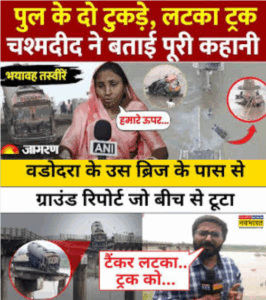
By the end of the day, the toll had become painfully clear: nine lives lost, their bodies recovered from the river and taken to local hospitals, while nine others were rescued—five of whom required further medical attention. The condition of the rescued was reported as stable, but the psychological scars of the ordeal would linger. The rescue operation continued late into the evening, with divers searching the riverbed and emergency personnel working tirelessly to ensure that no one was left behind.
The collapse of the Gambhira Bridge was not merely an accident; it was a tragedy foretold. For months, perhaps years, locals had warned of the bridge’s deteriorating condition. Cracks had appeared, the structure had weakened, and the need for urgent repairs was evident to anyone who crossed it daily. Yet, despite these warnings, vehicles—both light and heavy—were allowed to traverse the bridge, and no significant restrictions or repairs were put in place. The result was a disaster that, in the eyes of many, could have been prevented.
The emotional impact of the tragedy was palpable. The bridge, once a symbol of connection and progress, had become a site of mourning and anger. Families grieved for their lost loved ones, while survivors grappled with the trauma of their ordeal. The river, swollen from recent rains, became a graveyard, its waters filled with the debris of vehicles and the bodies of the victims. The images and stories emerging from the scene—of people trapped beneath trucks, of desperate attempts to save those submerged, of villagers and officials working side by side—captured the pain and horror of the event.
As news of the collapse spread, it drew national attention and prompted an outpouring of grief and support. Prime Minister Narendra Modi expressed his deep sorrow over the incident and announced compensation for the families of the deceased and the injured. The Gujarat state government also pledged financial assistance, but for many, these gestures, while necessary, could not compensate for the loss of life or the trauma endured by survivors and their families.
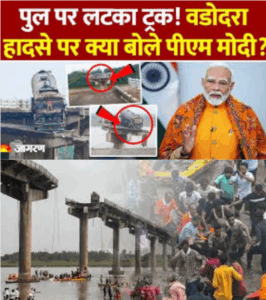
The Gambhira Bridge disaster also reignited painful memories of previous tragedies in Gujarat, most notably the Morbi bridge collapse in October 2022, which claimed more than 135 lives and injured over 180 people. The parallels between the two incidents were stark: both involved aging infrastructure, ignored warnings, and a devastating human toll. The repetition of such disasters raised urgent questions about the state of public infrastructure in India, the efficacy of maintenance and inspection regimes, and the accountability of officials responsible for public safety.
In the aftermath, the government launched an investigation into the causes of the collapse. A high-level committee of engineers and officials was tasked with conducting a technical assessment to determine whether negligence, poor maintenance, or structural failure was to blame. The investigation aimed not only to assign responsibility but also to recommend measures to prevent such tragedies in the future. However, for many affected by the disaster, these promises of inquiry and reform rang hollow, echoing similar assurances given after previous accidents.
The collapse also had immediate practical consequences for the region. The bridge was a crucial link for commuters and commerce, connecting the Saurashtra region to central Gujarat. With its destruction, traffic was diverted to the Sindh Road bridge, which could only accommodate light vehicles due to its own limitations. Heavy commercial vehicles were rerouted through the Vasad toll route, leading to congestion and logistical headaches. The disruption underscored the vulnerability of the region’s infrastructure and the urgent need for investment in maintenance and new construction.
Beyond the immediate tragedy, the Gambhira Bridge collapse became a symbol of broader systemic failures. It highlighted the dangers of neglecting public infrastructure, the consequences of bureaucratic inertia, and the high cost of ignoring the warnings of ordinary citizens. The disaster also exposed a troubling culture of complacency, where the risks to public safety are too often overlooked until it is too late.
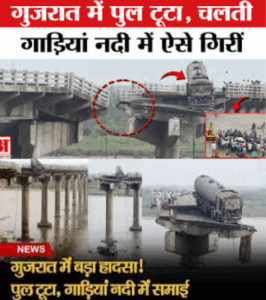
Yet, amid the sorrow and anger, there were also stories of resilience and solidarity. The collective response of villagers, rescue teams, and local authorities demonstrated the strength and compassion of the community. Survivors and witnesses spoke of strangers risking their lives to save others, of people working together in the face of overwhelming adversity. These acts of courage and kindness offered some solace in the midst of tragedy and pointed to the possibility of healing and renewal.
As the region mourned its dead and began the long process of recovery, the lessons of the Gambhira Bridge collapse could not be ignored. The disaster was a stark reminder that infrastructure is not merely about concrete and steel but about the lives and well-being of the people who depend on it every day. It underscored the need for regular inspections, timely repairs, and a culture of accountability at every level of government. Above all, it called for a renewed commitment to public safety, so that such tragedies do not become a recurring feature of life in India.
In the days and weeks to come, as investigations proceed and the community seeks answers, the hope is that the pain and loss of July 9th will lead to real change. The memory of those lost on the Gambhira Bridge must serve as a catalyst for reform, a reminder that the cost of neglect is measured not just in money but in human lives. Only by learning from this tragedy and taking concrete steps to improve infrastructure and governance can the people of Gujarat—and indeed, all of India—hope to prevent such disasters in the future. The bridge may have fallen, but the resolve to build a safer, more accountable society must endure.
Play video :
News
Sad News as Aishwarya Sharma brokedown after Neil Bhatt’s 2nd Marriage after her DIVORCE !
Sad News as Aishwarya Sharma brokedown after Neil Bhatt’s 2nd Marriage after her DIVORCE ! The world of Indian television…
Bihar News: Something strange happened in Rahul’s rally! Pappu Yadav and Kanhaiya were insulted? What did PK say?
Bihar News: Something strange happened in Rahul’s rally! Pappu Yadav and Kanhaiya were insulted? What did PK say? The recent…
After the blue drum, the body of a girl was found in a sack in Ludhiana, thrown on the road saying that the mango was rotten
After the blue drum, the body of a girl was found in a sack in Ludhiana, thrown on the road…
Mumbai Thane Life Video: Friend’s father got angry because the lift door was closed, slapped the 12 year old child
Mumbai Thane Life Video: Friend’s father got angry because the lift door was closed, slapped the 12 year old child…
Gujarat Bridge Collapse: The bridge connecting Vadodara-Anand collapsed, what did the policeman say?
Gujarat Bridge Collapse: The bridge connecting Vadodara-Anand collapsed, what did the policeman say? In the early hours of July 9th,…
Can Yaman’dan Demet’e duygusal sözler: “Senin için sadece saçımı değil, canımı da veririm.”
Can Yaman’dan Demet’e duygusal sözler: “Senin için sadece saçımı değil, canımı da veririm.” . . . Can Yaman’dan Demet’e Duygusal…
End of content
No more pages to load



